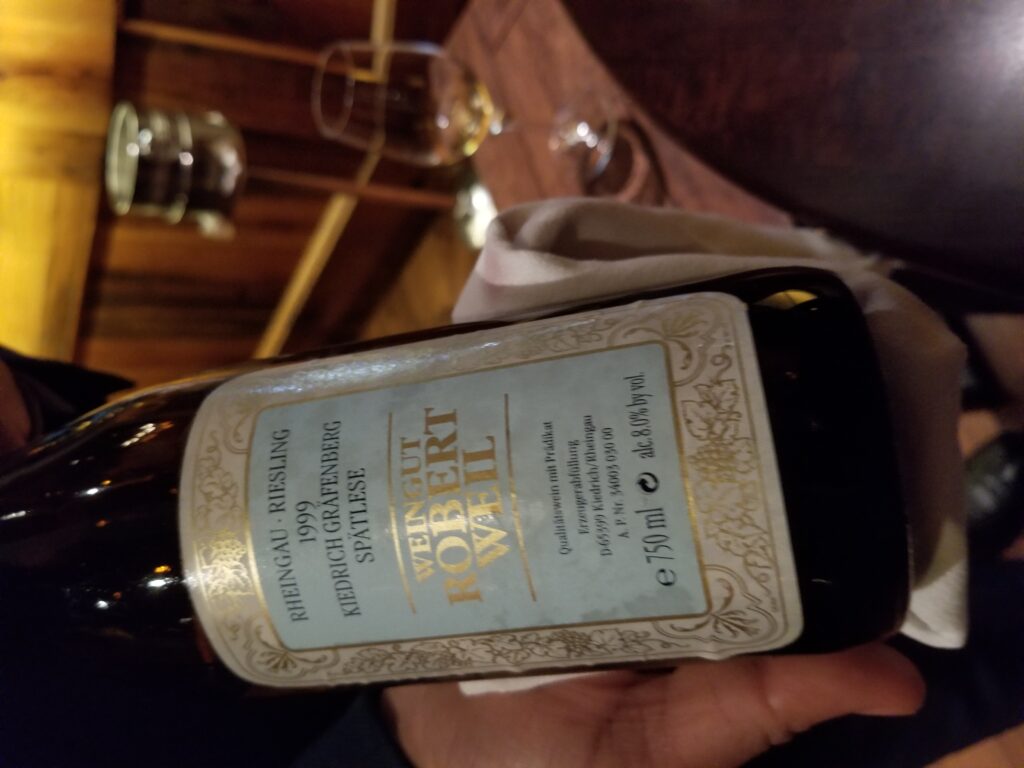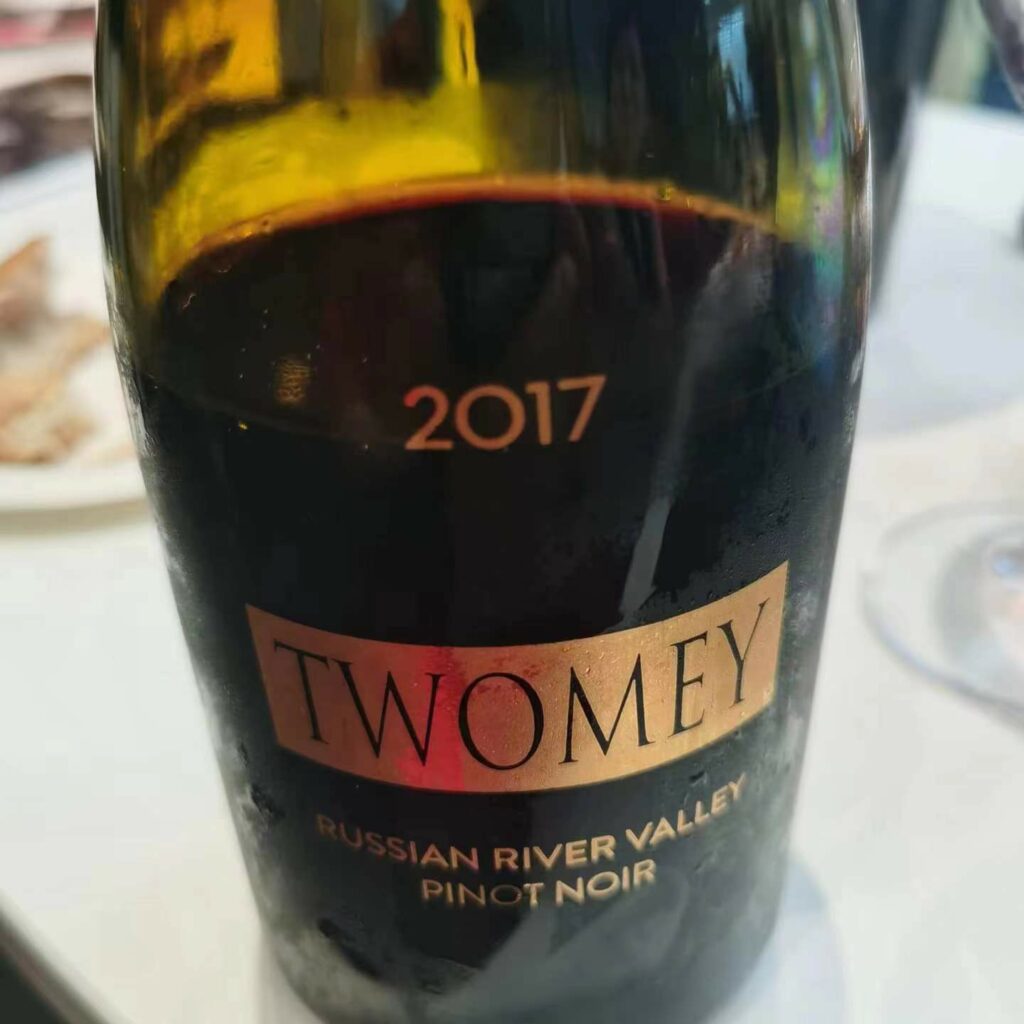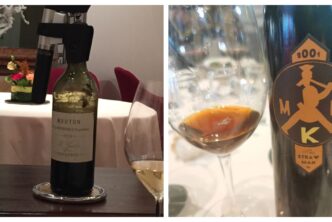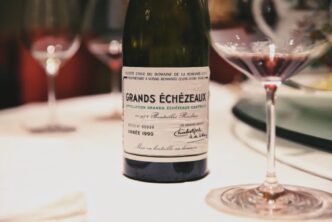Robert Weil 1999 Kiedricher Graefenberg Riesling Spatlese 95

by Robert Millman
I was fortunate enough to get my hands on the last bottle of this glorious Rheingau Riesling from a reliable source. Like so many German wines, the price was but a fraction of a white Burgundy of roughly comparable pedigree. As is so often the case in life, price is what you pay, quality if what you get. In this case, way more than the price of admission. The Weil estate was founded a mere 147 years ago in 1875. That makes it a comparative new kid on the German estate block. Fortunately, the founders were able to purchase large amounts of two top vineyards in the lovely village of Kiedrich: Turmberg and Graefenberg. Turmberg is in effect a premier cru (Erste Lage in German) while the Graefenberg is one of the best grand crus in the Rheingau. I have been drinking the Graefenberg Spatlese for many years. If someone said “You can only drink one German Riesling from now on”, I would unhesitatingly say, “Weil’s Graefenberg Spatlese.” Here is a quote for you: “The outstanding quality of the Kiedrich Gräfenberg (“Hill of the Counts”) vineyard was first documented in the late twelfth century. It is a steep, southwest-facing slope in a sheltered side valley of the Rheingau, with deep to medium-deep stony soil. Spätlese (“late-picked”) is produced from very ripe grapes, without botrytis, for a wine with epic minerality, nuanced fruit aromas, and an artful balance between crisp acidity and a rich natural sweetness.” This quotation is from the Ernie Loosen website, and it does a fine job of explaining and describing the wines from this remarkable site. I have a special fondness for non-botrytised German Rieslings: Botrytis, often a gorgeous an imprint on Riesling, does tend to subordinate the terroir to the concentrated fruit. In a properly made Spatlese, the nature of the site expresses itself very clearly as the foundation for all the lovely fruit/sugar and acid components of the wine.
In the case of the 1999, now nearly twenty-three years old, it was the wine’s remarkable finish which revealed the power and depth of its terroir. Perhaps a little past its peak, although still full of life, the gentlemanly bouquet and entry flavors did not prepare one for the fantastic finish. Some wines excel in aroma and entry impact—these are typically young wines from a good site. Slow oxidation over 20 years+ reduces the sensation of sweetness, replacing it with a suave richness which caresses the palate. In the case of the 1999, the still active acidity enlivened the mellowness of the wines. But then the finish took over completely. Everything before the finish was a mere amuse-bouche to the entrée. Yes, in this case, the entry was the exit. I cannot even say when the ultra-persistent after taste went away. A hint of bitterness and petrol often found in older Riesling wines gave the wine the special character that comes with successful aging. The finish, in this case the true destiny of the wine, dug into the palate, spread out, and retained its steely self indefinitely. I would call the 1999 a truly successful blending of terroir with aging. Time is both the friend and potential enemy of wine. Here Time and Terroir synthesized into a memorably beautiful Rheingau Riesling. Did I mention that the wine is 8% alcohol making it so pleasant to consume? Drinking window: 2022-2026.
Twomey 2017 Pinot Noir Russian River Valley California 94

by Ian D’Agata
Vibrant deep red with pale purple tinges and a pale garnet rim. Delicate, perfumed aromas of strawberry and raspberry are complicated by subtle, slowly-rising notes of cola, smoked ham, cardamom and dried violet. Then very pure and precise, with juicy red and blue fruit flavours gaining depth with aeration, veering towards liquid red cherry preserve and blueberry pie, nicely framed by silky tannins. Closes with noteworthy lingering floral perfume (hints of whole bunches here) and spicy mineral cut. This pretty wine boasts spicy nuances from the alluvial soils of the Westpin vineyard (the original vineyard from where Twomey made its first Pinot Noir wine back in 2002) and more floral reminders derived from the Goldridge soils at Last Stop Vineyard Estate (in fact some grapes were also sourced from the Bailey and Bartolomei vineyards). Aged for fourteen months in French oak barrels (27% new), with 22% whole clusters used, this is a truly delicious, very pretty Pinot Noir wine. It gains markedly in terms of depth and complexity with aeration; and like very few California Pinot Noir wines, it conveys its North American origin (there’s nothing New Zealand or South African about this, for example) but without foregoing the purity and daintiness of the grape that is so apparent in the best of Burgundy. A neat trick, really: very well done. The Russian River’s Pinot Noir wines may be increasingly known for rich and bold flavours, but in fact the area long excelled in making more delicate, complex Pinots of real breed and grace, as this exemplary wine showcases so well. Drinking window: 2022-2028.

 English
English

